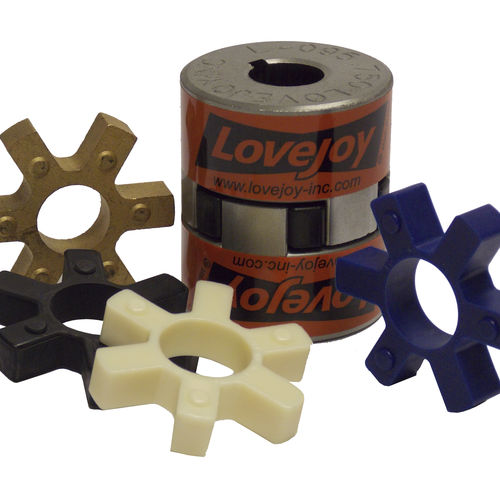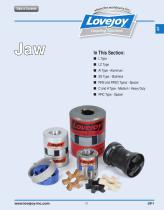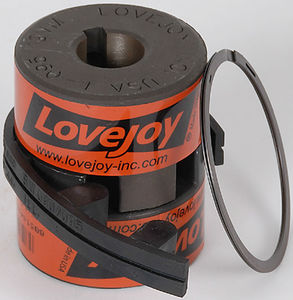
- Company
- Products
- Catalogs
- News & Trends
- Exhibitions
Jaw coupling L serieselastomerfor shaftsmisalignment correction







Add to favorites
Compare this product
Characteristics
- Type
- jaw, elastomer
- Product applications
- for shafts
- Other characteristics
- misalignment correction
- Installation system
- flange
- Torque
Max.: 1,412 Nm
(1,041.4378 ft.lb)Min.: 0.4 Nm
(0.295 ft.lb)- Rotational speed
Max.: 3,600 rpm
(22,619.47 rad.min-1)Min.: 0 rpm
(0 rad.min-1)
Description
Industry’s standard shaft coupling
Accommodates for angular and parallel shaft misalignment
Fail-safe (will still perform if elastomeric “spider” fails)
No metal to metal contact
Resistant to oil, dirt, sand, moisture, and grease
Industry’s largest available selection from stock
A full L line coupling is comprised of 3 parts:
2 hubs (sintered iron for L035-L150 & cast iron for L190-276)
1 elastomeric spider (SOX/NBR, Urethane, Hytrel®, or Bronze)
Spider Performance Data (Standard Catalog)
SOX (NBR) Rubber (Standard Insert) – Nitrile Butadiene (Buna N) Rubber is a flexible elastomer material that is oil resistant, resembles natural rubber in resilience and elasticity.
Urethane – Greater torque capability than NBR (1.5 times), provides less dampening effect, and operates in a smaller temperature range. Good resistance to oil and chemicals. Not recommended for cyclic or start/stop applications.
Hytrel® – Flexible elastomer designed for high torque and high temperature operations. Excellent resistance to oil and chemicals. Not recommended for cyclic or start/stop applications.
Bronze – Rigid, porous oil-impregnated metal insert exclusively for low speed (max 250 RPM) applications requiring high torque capabilities. Not affected by extreme temperatures, water, oil, or dirt.
VIDEO
Catalogs
Related Searches
- Lovejoy flexible coupling
- Lovejoy shaft coupling
- Lovejoy flange coupling
- Lovejoy torque coupling
- Lovejoy rigid coupling
- Transmission shaft coupling
- Lovejoy zero-backlash coupling
- Lovejoy sleeve coupling
- Compact coupling
- Engine shaft coupling
- Lovejoy high load capacity coupling
- Belt pulley
- Lovejoy misalignment correction coupling
- Cardan joint
- Lovejoy disc coupling
- Metal pulley
- Lovejoy high-torque coupling
- Lovejoy gear coupling
- Toothed pulley
- Lovejoy elastomer coupling
*Prices are pre-tax. They exclude delivery charges and customs duties and do not include additional charges for installation or activation options. Prices are indicative only and may vary by country, with changes to the cost of raw materials and exchange rates.












